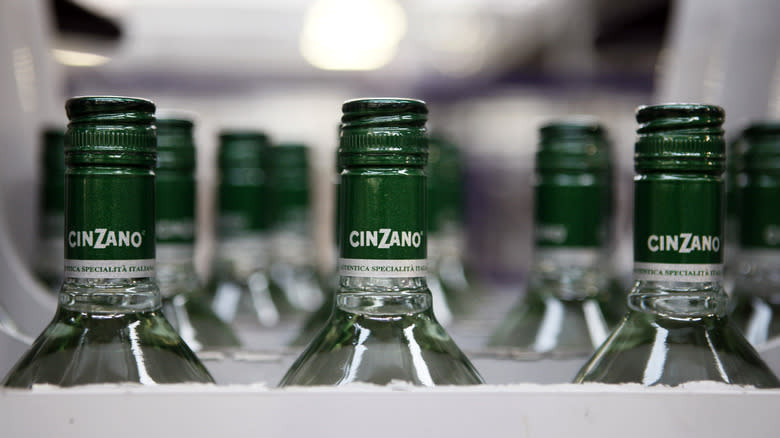The Best Way To Store Vermouth, According To An Expert

If you're a fan of cocktails, then it is highly likely you have a bottle or three of vermouth somewhere in your house ready to dress a martini or Manhattan. But, are you being kind to the fortified wine? Chances are, you've seen bottles of dry French white vermouth or lightly spiced Italian red vermouth sitting out on a bar shelf, practically naked to the elements. While this might be fine for stronger spirits like whiskey and gin, it is a travesty for vermouth and quickly saps the libation of its characteristic flavor.
Remember that vermouth is a wine, albeit one fortified with herbs, aromatics, and additional spirits. As such, it is subject to the same oxidation as other wines, which occurs once it makes contact with ambient air. Tasting Table recently spoke with Francesco Lafranconi, master mixologist at the Rosevale Cocktail Room inside the Civilian Hotel in New York, who illuminated how a better understanding of vermouth is leading to better storage.
"For the past ten years there has been an education campaign about storing the vermouth in a refrigerated environment (preferably like wine around 55-60 F) to slow down the oxidation process once the bottle has been opened," says Lafranconi. If you have a wine fridge set to this ideal temperature range, use that for vermouth (both red and white) in addition to wine. Otherwise, a regular refrigerator will work, but you may want to let your bottles warm a bit before adding the vermouth to a cocktail.
Read more: 13 Liquors Your Home Bar Should Have
Get The Gas Out

An important step towards an optimal vermouth experience actually begins at the bottle shop. A quick trip down the vermouth aisle unveils bottles of all sizes. A big bottle might be best for a cocktail bar that runs through copious amounts of vermouth, but for those who use it infrequently, opting for smaller bottles is a wise decision. Smaller bottles reduce the exposure of the liquid to air and get used quicker, minimizing the risk of oxidation. So, if you only make a Manhattan every once in a while, opt for a 350 milliliter or smaller bottle.
Additionally, investing in preservation tools such as an argon gas system or vacuum pump can significantly extend the freshness of vermouth. Used extensively with wine in both bars and homes, preservation systems work by displacing the air in the bottle with an inert gas blanket. Since oxygen is one of the primary culprits behind oxidation, minimizing its presence helps maintain the vermouth's original flavors. Vacuum pumps, on the other hand, remove much of the air from the bottle, creating a vacuum seal that prevents further oxidation.
These preservation methods are particularly valuable for those who enjoy a cocktail occasionally or have a diverse collection of vermouths. By reducing the exposure to air, enthusiasts can savor the distinct characteristics of each vermouth bottle, unlocking a world of flavors with every pour.
Read the original article on Tasting Table.

